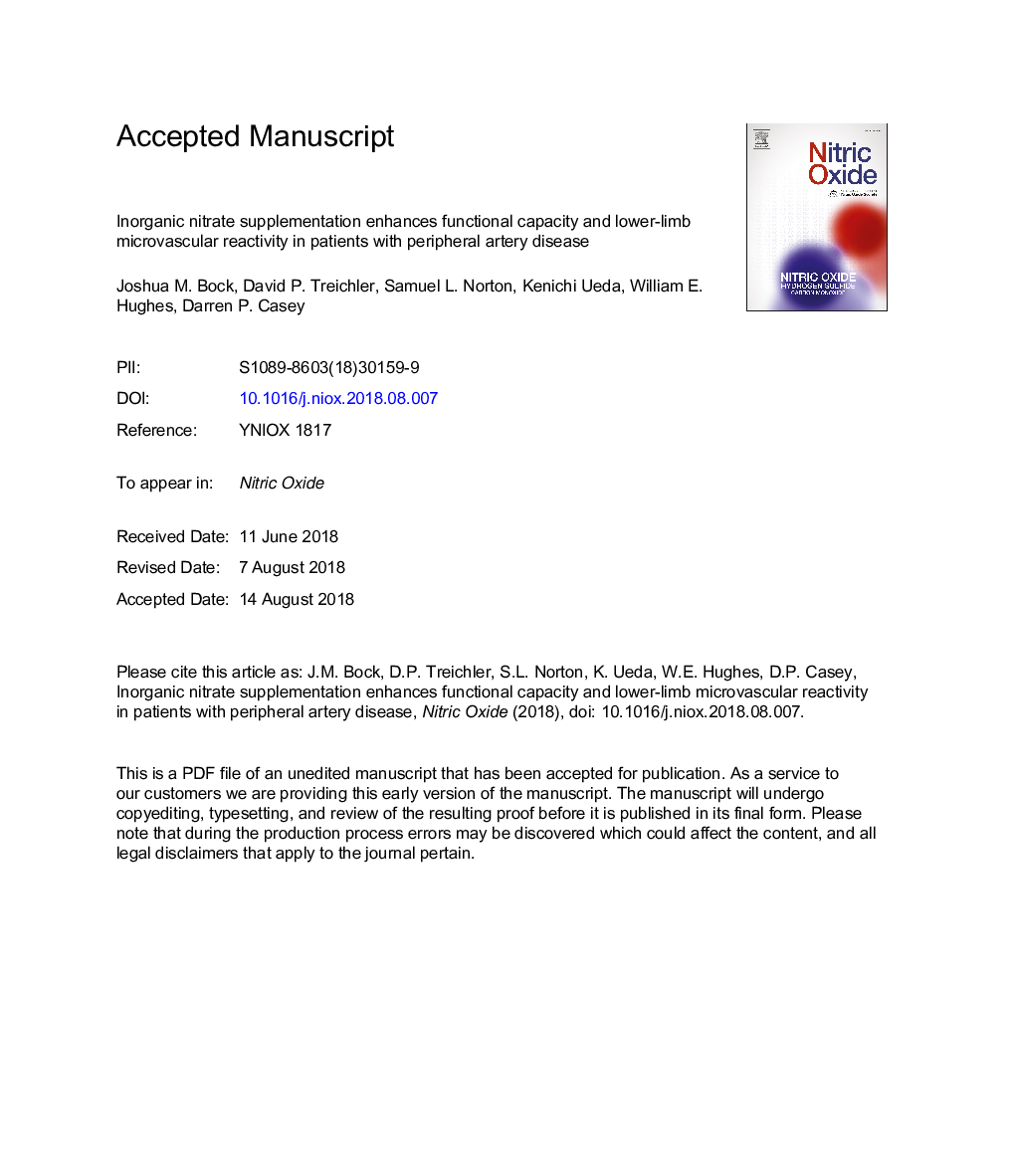| Article ID | Journal | Published Year | Pages | File Type |
|---|---|---|---|---|
| 8344409 | Nitric Oxide | 2018 | 33 Pages |
Abstract
Peripheral artery disease (PAD) is characterized by functional and vascular impairments as well as elevated levels of inflammation which are associated with reduced nitric oxide (NO) bioavailability. Inorganic nitrate supplementation boosts NO bioavailability potentially improving functional and vasodilatory capacities and may reduce inflammation. Twenty-one patients with PAD were randomly assigned to sodium nitrate (NaNO3) or placebo supplementation groups for eight-weeks. Outcome measures included a 6-min walk test (6â¯MWT), blood flow and vasodilator function in the forearm and calf, as well as plasma inflammatory and adhesion biomarker concentrations. NaNO3 elevated plasma nitrate (32.3â¯Â±â¯20.0 to 379.8â¯Â±â¯204.6â¯Î¼M) and nitrite (192.2â¯Â±â¯51.8 to 353.1â¯Â±â¯134.2â¯nM), improved 6â¯MWT performance (387â¯Â±â¯90 to 425â¯Â±â¯82â¯m), peak calf blood flow (BFPeak; 11.6â¯Â±â¯4.9 to 14.1â¯Â±â¯5.1â¯mL/dLâ¯tissue/min), and peak calf vascular conductance (VCPeak; 11.1â¯Â±â¯4.3 to 14.2â¯Â±â¯4.9â¯mL/dLâ¯tissue/min/mmHg) (pâ¯<â¯0.05 for all). Improvements in calf BFPeak (râ¯=â¯0.70, pâ¯<â¯0.05) and VCPeak (râ¯=â¯0.61, pâ¯<â¯0.05) correlated with changes in 6â¯MWT distance. Placebo supplementation did not change plasma nitrate or nitrite, 6â¯MWT, calf BFPeak, or calf VCPeak. Forearm vascular function nor inflammatory and adhesion biomarker concentrations changed in either group. Eight-weeks of NaNO3 supplementation improves vasodilatory capacity in the lower-limbs of patients with PAD, which correlated with improvement in functional capacity.
Related Topics
Life Sciences
Biochemistry, Genetics and Molecular Biology
Biochemistry
Authors
Joshua M. Bock, David P. Treichler, Samuel L. Norton, Kenichi Ueda, William E. Hughes, Darren P. Casey,
